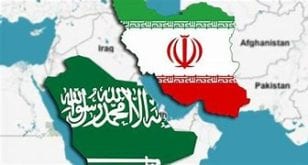Al-Monitor – In September 2022, the massive “Woman, Life, Freedom” protests began in Iran. However, beyond the movement’s primary slogan, the eruption of social discontent one year ago was significantly fueled by the economic deficiencies stemming from widespread corruption and incompetence.
Davoud Souri, an economist at Saman Bank in Tehran, said in October 2022, “Economic dissatisfaction has a huge contribution” to the discontent in Iranian society. “Naturally, accumulated economic alienation has a significant impact on the strength and eruption of protests.”
Economic indicators could help predict whether a new wave of unrest will emerge on the anniversary of last year’s protests. The below comparison of key economic indicators is based on the latest report published by the Statistical Center of Iran in August 2023. (There is no new data on some other indicators, such as the distribution of income and the Gini Index.)
Ever since 2018, annual inflation figures have remained above 30%. Inflationary trends continued unabated in the past 12 months. The annualized inflation rate grew from 39.3% in August 2022 to 49.1% in May 2023, but it has declined since then to about 46.7% in August of this year.A Flourish chart
Government officials claim that inflation figures are declining, but the fact is that inflation, especially prices for food and drink, is much higher than last year, while real income growth has been about 25% in the same period. Consequently, in terms of purchasing power, the snapshot of 2023 is less favorable than 2022. Officials continue to push back the planned adjustment of fuel subsidies because that inflationary impact would likely lead to massive social unrest.
Unemployment
Unemployment stood at 8.2% in the fall of 2022 but then went up to 9.7% in the winter. This rapid increase could partly be explained by seasonal agricultural work, but some of it is related to the protests. However, official data shows that unemployment fell back to 8.2% in the spring of 2023. In parallel, youth (aged 18-35) unemployment stood at 14.8% in the fall of 2022, rose to 17.4% in the winter and then eased to 15.5% in the spring of 2023. Increased youth unemployment would certainly produce a more fertile ground for protests this fall.
While experts are waiting for official data on unemployment in the summer of the current year, the government is celebrating the lower-than-expected unemployment rate in the spring of 2023. They claim the 8.2% to be the lowest unemployment rate in the past 10 years, which is statistically flawed as the Statistical Center of Iran changed its methodology to calculate the relevant rates.
In 2023, 51.3% of the workforce is employed in the service sectors, while the contribution of the service sectors to the GDP is 55%. Both figures show growth compared to previous years. However, a number of developments, especially the clampdown on startups and private companies, could potentially lead to increased unemployment and new protests.
Overall Outlook
Economic data and an assessment of the government’s financial position suggest that the Islamic Republic will not manage to address the growing economic grievances of Iranian society. Foreign policy developments, such as the Beijing-brokered deal with Saudi Arabia and the recent de-escalation with the United States, indicate that Tehran is focusing on external relations to compensate for the deepening economic crisis. Evidently, a continued path of de-escalation will address some of the current issues such as government finances and the overall investment climate.
In the absence of economic improvement, there are also cultural initiatives to heal some of the wounds. For example, a Kurdish music festival is being held in Sanandaj, the Kurdish capital of Kordestan province.
Another factor in the strength of future protests is the weak performance of the opposition leaders in the Iranian diaspora.
One student leader who talked to Al-Monitor on condition of anonymity said that the people remain disillusioned with the Islamic Republic but also disenchanted with the opposition leaders outside Iran and will look for alternative ways to protest and communicate their demands. For example, young protesters organize demonstrations in parks and other public places. However, we don’t expect mass street protests.
In the meantime, many educated Iranians will emigrate, which in itself will deepen the economic crisis.
All in all, Iran’s society and economy continue to be in a state of unrest, seeking improvements that appear elusive as long as the existing governance structures remain in place.
 Shabtabnews In this dark night, I have lost my way – Arise from a corner, oh you the star of guidance.
Shabtabnews In this dark night, I have lost my way – Arise from a corner, oh you the star of guidance.



